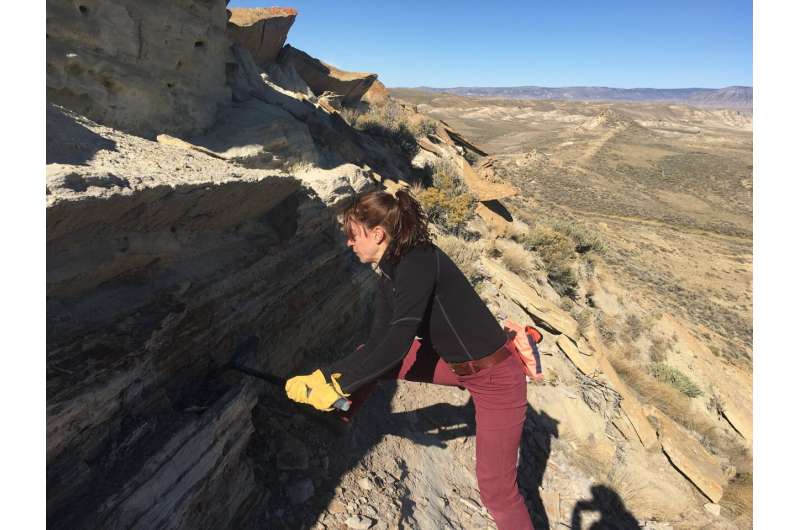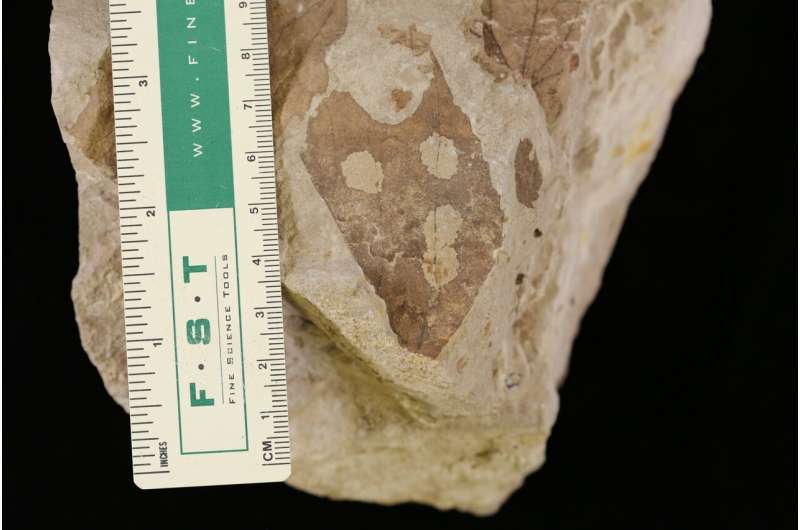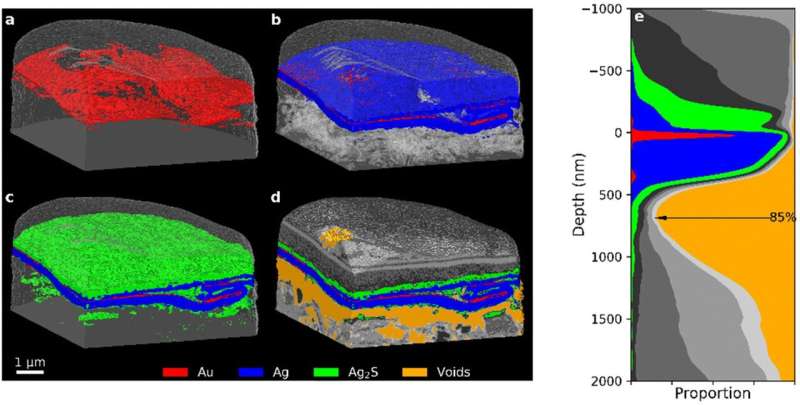Study links omega-3s to improved brain structure, cognition at midlife
Holy mackerel! Could eating salmon, cod, tuna, herring or sardines keep our brains healthy and our thinking agile in middle age? New research makes this connection.
Peer-Reviewed PublicationSAN ANTONIO (Oct. 5, 2022) — Eating cold-water fish and other sources of omega-3 fatty acids may preserve brain health and enhance cognition in middle age, new evidence indicates.
Having at least some omega-3s in red blood cells was associated with better brain structure and cognitive function among healthy study volunteers in their 40s and 50s, according to research published online Oct. 5 in Neurology®, the medical journal of the American Academy of Neurology. Faculty of The University of Texas Health Science Center at San Antonio (UT Health San Antonio) and other investigators of the Framingham Heart Study conducted the analysis.
“Studies have looked at this association in older populations. The new contribution here is that, even at younger ages, if you have a diet that includes some omega-3 fatty acids, you are already protecting your brain for most of the indicators of brain aging that we see at middle age,” said Claudia Satizabal, PhD, assistant professor of population health sciences with the Glenn Biggs Institute for Alzheimer’s and Neurodegenerative Diseases at UT Health San Antonio. Satizabal is the lead author of the study.
Volunteers’ average age was 46. The team looked at the relation of red blood cell omega-3 fatty acid concentrations with MRI and cognitive markers of brain aging. Researchers also studied the effect of omega-3 red blood cell concentrations in volunteers who carried APOE4, a genetic variation linked to higher risk of Alzheimer’s disease.
The study of 2,183 dementia- and stroke-free participants found that:
- Higher omega-3 index was associated with larger hippocampal volumes. The hippocampus, a structure in the brain, plays a major role in learning and memory.
- Consuming more omega-3s was associated with better abstract reasoning, or the ability to understand complex concepts using logical thinking.
- APOE4 carriers with a higher omega-3 index had less small-vessel disease. The APOE4 gene is associated with cardiovascular disease and vascular dementia.
Researchers used a technique called gas chromatography to measure docosahexaenoic acid (DHA) and eicosapentaenoic acid (EPA) concentrations from red blood cells. The omega-3 index was calculated as DHA plus EPA.
“Omega-3 fatty acids such as EPA and DHA are key micronutrients that enhance and protect the brain,” said study coauthor Debora Melo van Lent, PhD, postdoctoral research fellow at the Biggs Institute. “Our study is one of the first to observe this effect in a younger population. More studies in this age group are needed.”
The team divided participants into those who had very little omega-3 red blood cell concentration and those who had at least a little and more. “We saw the worst outcomes in the people who had the lowest consumption of omega-3s,” Satizabal said. “So, that is something interesting. Although the more omega-3 the more benefits for the brain, you just need to eat some to see benefits.”
Researchers don’t know how DHA and EPA protect the brain. One theory is that, because those fatty acids are needed in the membrane of neurons, when they are replaced with other types of fatty acids, that’s when neurons (nerve cells) become unstable. Another explanation may have to deal with the anti-inflammatory properties of DHA and EPA. “It’s complex. We don’t understand everything yet, but we show that, somehow, if you increase your consumption of omega-3s even by a little bit, you are protecting your brain,” Satizabal said.
It's encouraging that DHA and EPA also protected APOE4 carriers’ brain health. “It’s genetics, so you can’t change it,” Melo van Lent said, referring to the vulnerability of this risk group. “So, if there is a modifiable risk factor that can outweigh genetic predisposition, that’s a big gain.”
Association of Red Blood Cell Omega-3 Fatty Acids with MRI Markers and Cognitive Function in Midlife – The Framingham Heart Study
Claudia L. Satizabal, PhD; Jayandra J. Himali, PhD; Alexa S. Beiser, PhD; Vasan S. Ramachandran, MD; Debora Melo van Lent, PhD; Dibya Himali, MS; Hugo J. Aparicio, MD, MPH; Pauline Maillard, PhD; Charles DeCarli, MD; William S. Harris, PhD; and Sudha Seshadri, MD.
First published: Oct. 5, 2022, Neurology
The University of Texas Health Science Center at San Antonio (UT Health San Antonio), a primary driver for San Antonio’s $42.4 billion health care and biosciences sector, is the largest research university in South Texas with an annual research portfolio of $350 million. Driving substantial economic impact with its five professional schools, a diverse workforce of more than 7,000, an annual operating budget of more than $1 billion and a clinical practice that provides more than 2 million patient visits each year, UT Health San Antonio plans to add more than 1,500 higher-wage jobs over the next five years to serve San Antonio, Bexar County and South Texas. To learn about the many ways “We make lives better®,” visit http://uthscsa.edu.
Stay connected with The University of Texas Health Science Center at San Antonio on Facebook, Twitter, LinkedIn, Instagram and YouTube.
The Glenn Biggs Institute for Alzheimer’s and Neurodegenerative Diseases is dedicated to providing comprehensive dementia care while advancing treatment through clinical trials and research. The Biggs Institute is a National Institute on Aging (NIA)-designated Alzheimer’s Disease Research Center (ADRC). In addition to patient care and research, the Biggs Institute partners with the School of Nursing at UT Health San Antonio to offer the Caring for the Caregiver program.
JOURNAL
Neurology
METHOD OF RESEARCH
Observational study
SUBJECT OF RESEARCH
People
ARTICLE TITLE
Study links omega-3s to improved brain structure, cognition at midlife
ARTICLE PUBLICATION DATE
5-Oct-2022
Can eating omega-3 fatty acids in midlife help your brain?
MINNEAPOLIS – An exploratory study suggests that people who eat more foods with omega-3 fatty acids in midlife may have better thinking skills and even better brain structure than people who eat few foods with the fatty acids. The study is published in the October 5, 2022, online issue of Neurology®, the medical journal of the American Academy of Neurology. Omega-3 fatty acids are found in fish such as salmon, sardines, lake trout and albacore tuna. They are also found in foods fortified with the fatty acids or supplements.
“Improving our diet is one way to promote our brain health,” said study author Claudia L. Satizabal, PhD, of the University of Texas Health Science Center at San Antonio. “If people could improve their cognitive resilience and potentially ward off dementia with some simple changes to their diet, that could have a large impact on public health. Even better, our study suggests that even modest consumption of omega-3 may be enough to preserve brain function. This is in line with the current American Heart Association dietary guidelines to consume at least two servings of fish per week to improve cardiovascular health.”
The cross-sectional study involved 2,183 people with an average age of 46 who did not have dementia or stroke. Their levels of omega-3 fatty acids were measured. They took tests of their thinking skills. They had scans to measure brain volumes.
The people in the low group had an average of 3.4% of their total fatty acids as omega-3 fatty acids compared to an average of 5.2% for people in the high group. An optimal level is 8% or higher. Levels between 4% and 8% are considered intermediate. Levels below 4% are considered low.
Researchers adjusted for factors that could affect results. They also applied a mathematical process to normalize the data. They observed that people who ate higher levels of omega-3 fatty acids not only had higher average scores on a test of abstract reasoning, they also had larger average volumes in the hippocampus area of their brains, which plays an important role in memory.
“These results need to be confirmed with additional research, but it’s exciting that omega-3 levels could play a role in improving cognitive resilience, even in middle-aged people,” Satizabal said.
She noted that the study was a snapshot in time, and participants were not followed over time, so the results do not prove that eating omega-3 fatty acids will preserve brain function. It only shows an association.
While the study included a small proportion of people of many races/ethnicities, Satizabal said that the majority of the sample were non-Hispanic white adults, which may limit the ability to apply the results to other groups.
The study was supported by the National Heart, Lung, and Blood Institute, National Institute on Aging and National Institute of Neurological Disorders and Stroke.
Learn more about brain health at BrainandLife.org, home of the American Academy of Neurology’s free patient and caregiver magazine focused on the intersection of neurologic disease and brain health. Follow Brain & Life® on Facebook, Twitter and Instagram.
When posting to social media channels about this research, we encourage you to use the hashtags #Neurology and #AANscience.
The American Academy of Neurology is the world’s largest association of neurologists and neuroscience professionals, with over 38,000 members. The AAN is dedicated to promoting the highest quality patient-centered neurologic care. A neurologist is a doctor with specialized training in diagnosing, treating and managing disorders of the brain and nervous system such as Alzheimer’s disease, stroke, migraine, multiple sclerosis, concussion, Parkinson’s disease and epilepsy.
For more information about the American Academy of Neurology, visit AAN.com or find us on Facebook, Twitter, Instagram, LinkedIn and YouTube.
JOURNAL
Neurology








